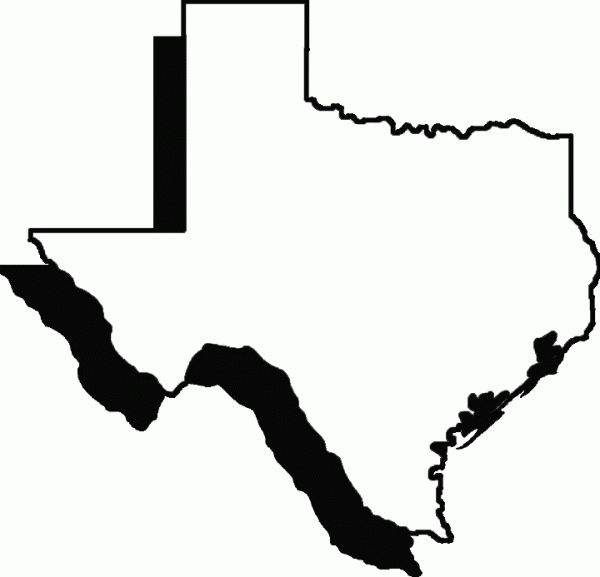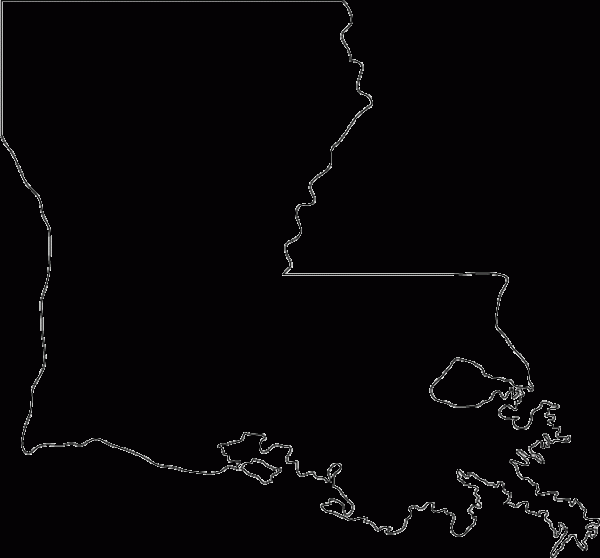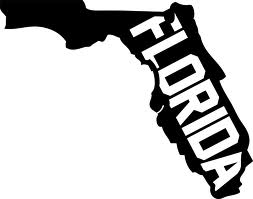Say you’re packing your swimwear and heading to the beach – which state would you go for? Kansas? Probably not. New Mexico? Again, you might rethink that one. Most likely it’d be California or Florida that got your tourism dollars…but which state actually has the greatest amount of coastline? There seems to be a difference of opinion between experts on how you actually measure these things, the chief difference seeming to be whether you count inland tidal areas or not (Method 1 doesn’t, Method 2 does). The two different methods have produced two different lists of states – one of 23, one of 30 – so is frustratingly inaccurate on which states actually have the most coast. So, we’ve decided to split the difference – work out each state’s average position on the two lists and then make a top ten from there. But be warned, having a lot of coastline by no means guarantees golden, sandy beaches – it could be more like polar ice. Find out more in our Top 10 States by Coastline.
10. Virginia

The number 10 slot on our list was a difficult choice – three states averaged at number 11.5 over the two lists. But Virginia, which came in 15th on the Method 1 list and 8th on the Method 2 list, had a higher average amount of coastline than its two competitors. It really shows up the difference between measuring inlets or not – without inlets the state has just 112 miles of coastline, but add in Chesapeake Bay and the various tidal estuaries around it and suddenly the figure is 3,315 miles. So, split the difference and it’s still an impressive 1713 miles, dwarfing the averages of South Carolina (1531 miles) and Washington (1591 miles). And the state of Virginia seems proud of its miles of “clean beaches, outdoor recreation…and coastal cuisine.” so they would probably err towards the bigger figure!
9. Hawaii

If you were to order these states by a third method – what percentage of their border is coastal – then Hawaii would probably top the list. Similarly if you were ranking them by the ones you’d actually want to vacation in, Hawaii would score highly. But as it is, it comes in 4th on the simpler list (not measuring coastal inlets), but falls way behind to 18th place when all those states with wobbly coastlines are counted. So, it’s an average of 11th place for the Aloha State, despite its alluring beach culture. Even with the simpler method, it still has 750 miles of those beaches, so deserves its reputation as a sunny vacation spot.
8. Michigan

Another great example of the disparity of the two methods. As any high school Geography student knows, Michigan is not on the coast. Going due east from Detroit, you’d have to cross two states before hitting the ocean. Therefore, it’s one of the 7 states that doesn’t appear on the Method 1 list at all. But Method 2 counts the Great Lakes, and so Michigan appears at number 9. And using my (admittedly flawed) methodology, it retains its average number 9 position. So, it’s not the kind of state where you’re likely to be sweltering in extreme heat, but there are still a number of beaches on the edge of the lakes which are worth visiting.
7. North Carolina

One of three states that averaged out an a 6.5th position (7th Method 1, 6th on Method 2), it has a similar total coastline to neighboring Virginia, with 3,375 miles of coast including the inlets. But it had more to start with – 301 miles of undisputed coastline, compared to Virginia’s 112 miles. This is probably because the southern state line suddenly dives down at a diagonal (following Highway 74), rather than carrying on in a straight line to Jacksonville. It makes the most of its extended coastline with clean beaches, watersports and even dolphin spotting! The dolphin spotting trips go from Emerald Isle, a part of a long thin island separated from the mainland by just a few miles of water, known as the Bogue Sound. The Island itself is only 200m wide at some points, barely enough space for a road to go through!
6. Maine

Maine also averaged out at 6.5th position, being 9th on the Method 1 list and 4th on the Method 2 list, thanks to the waters around Deer Island and North Haven. In fact, the whole coastline of the state is positively fjord-like in its complexity. But there’s bad news for sun-bathers -the coast is mainly rocky and forested rather than sandy. As the poet Edna St. Vincent Millay put it, “All I could see from where I stood/Was three long mountains and a wood/I turned and looked the other way/And saw three islands in a bay”. It’s also not dazzlingly hot, with 80F only being reached at the top end of the scale, in the warmest town, in July. But on the other hand, the seafood is legendary so that’s a good reason to go to the coast!
5. Texas

The third state to average at 6.5, but with a bigger average on coastal mileage than either Maine or North Carolina. It comes 6th in the Method 1 list and 7th on the Method 2 list. Luscious beaches don’t really chime with the clichéd image of Texas as being hot and dusty, but it has 3,359 miles of them when you count areas like the Padre Island National Park. In many ways, Texas does things bigger and better than everywhere else, so it’s not really that surprising that it has extensive beaches as well as megacities and areas of open space that are bigger than some European countries. The climate at the southern tip of Texas is tropical, so a great spot for sunseekers!
4. California

One of the most famously coast-heavy states, it’s no surprise to find California near the top of the list. Coming 3rd and 5th in the two lists, it loses out to Louisiana once the coastal inlets are counted. But that’s not to the detriment of the 840 miles of coastline that are, for the most part, covered in golden sand and fringed by palm trees. The most famous beaches include Laguna Beach, in Orange County, and Venice Beach, known for its street artists and vendors as well as its sunny sands. Both have featured in a number of movies, thanks to Hollywood being a Los Angeles neighbor of theirs. Definitely a prime sunspot, with plenty of different beaches to choose from.
3. Louisiana

Edging out California in the list, Louisiana gains third place thanks to a weird twist of both math and geography, that sees 397 miles of coastline become 7,721 miles once its myriad bays are counted. Again, its coastline could rival Norway’s for complexity, especially around the Grand Isle State Park, which is backed by 6 or so bays. One of the most notable bays is Barataria Bay, now defined as an estuary of national significance because of its bird life and wetlands. To its east is the fascinating mouth of the Mississippi River, which carries on out to sea for miles after the rest of the land has given up. Only the thinnest slivers of land cling to the side of the mighty river as it makes its confident way into the Gulf of Mexico, although there is a road alongside it for a surprisingly long way (Tidewater Road goes right through Delta National Wildlife Refuge). An amazingly complex piece of coastland, compressed into a relatively small space.
2. Florida

An undisputed winner among the contiguous states, coming 2nd in both lists only behind Alaska. Florida is another state that is mostly coastline, thanks to its peninsular shape. It certainly lives up to its name as “The Sunshine State“, with temperatures regularly in the 90s and even hitting 109F on one occasion! But with the sunshine comes more turbulent weather, with tropical storms and thunder a frequent occurrence. It’s also the most lightning-prone state by far, so not one for those who are scared of extreme weather. You can blame the competing weather systems from either side of the peninsula – when they clash over the landmass, the results are somewhat dramatic.
But for those who have learnt to shelter from the oncoming storm, Florida is a popular retirement destination and its beaches are almost permanently packed with both tourists and residents. Its coastline stats are certainly impressive, with 1,350 miles of coastline using Method 1 and 8,436 miles using Method 2. It would be an out-and-out winner if it wasn’t for that rule-defying state at the top.
1. Alaska

By which you might have discerned that Alaska is the clear winner of both methods when it comes to miles of coastline. Its stats are barely comparable with other states – 6,640 miles of coastline using Method 1 and a staggering 33,904 miles of coastline using Method 2. But don’t book your summer vacation there just yet – much of the coast is inhospitable and some is frozen over, with temperatures in the north rarely going above 0C. Its rocky, icy coastline is certainly dramatic in parts and there’s an impressive quantity of it, but you’d be hard pressed to find a sandy beach and the only ice-cream might well be the sort that you dig out of an ice floe yourself! But a definite winner on the “most coastline” stakes.